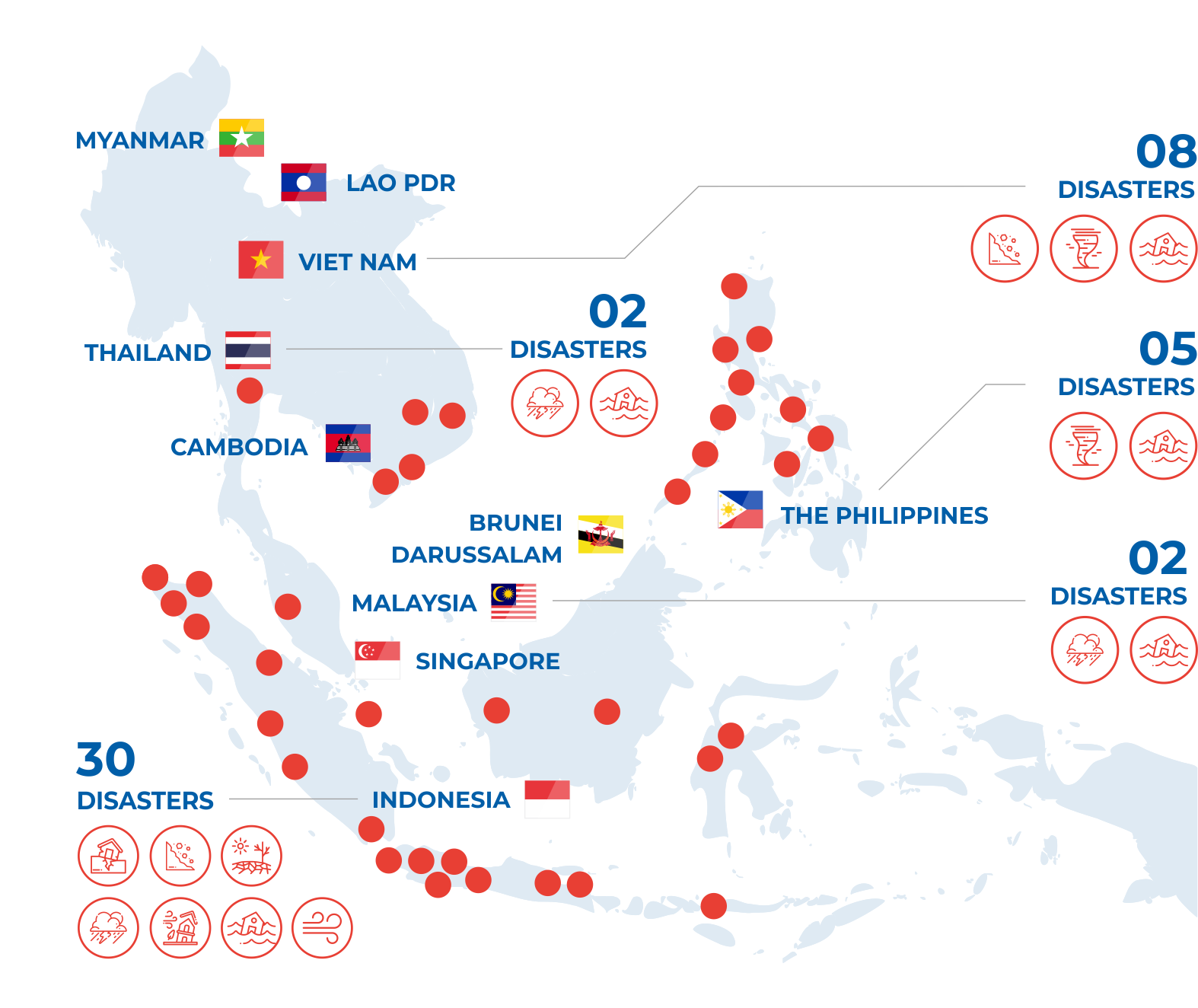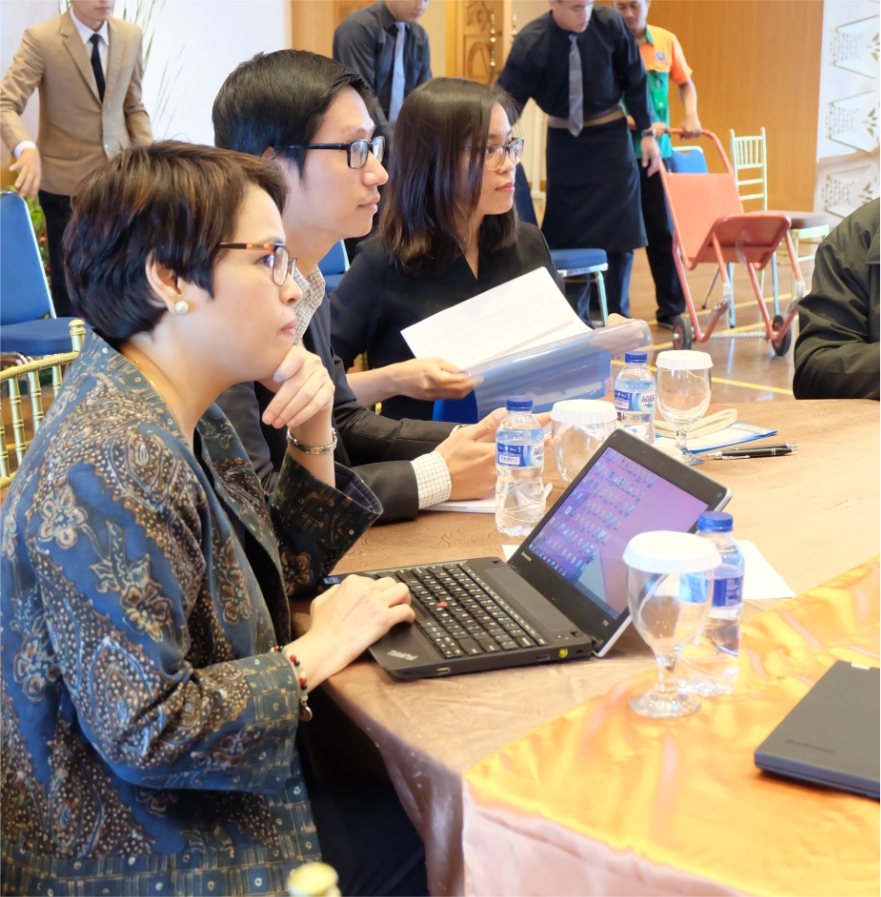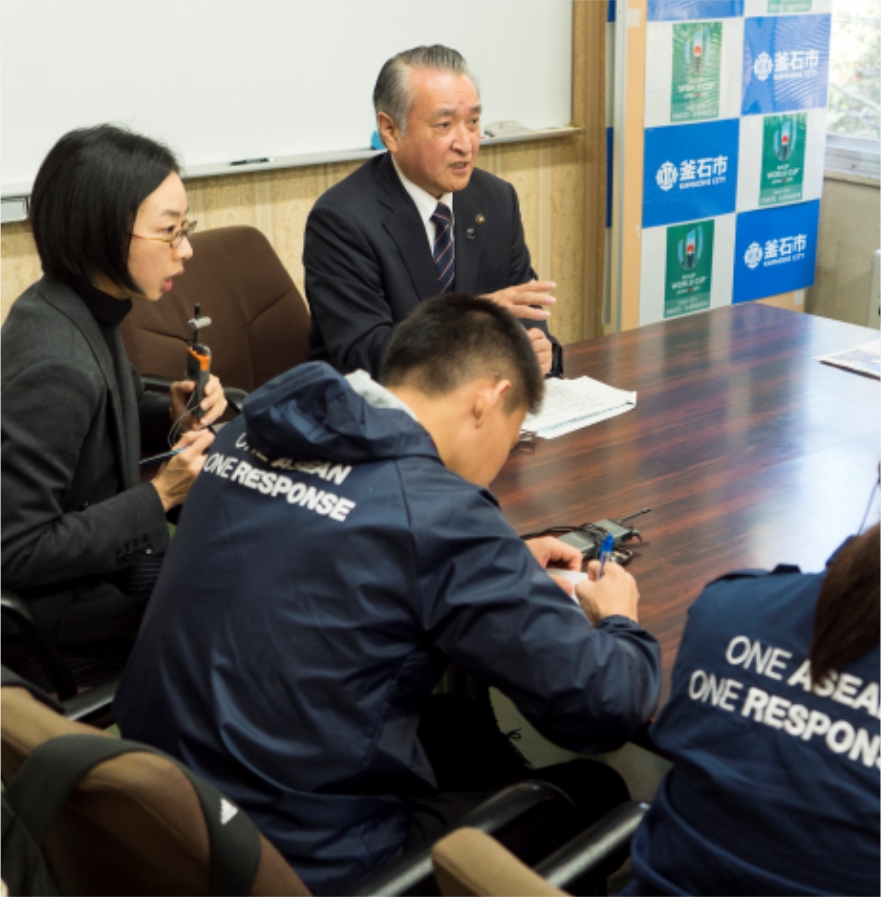the Column Vol 45

ARDEX-18
Every two years ASEAN’s disaster management bodies and practitioners come together to undertake the region’s largest simulation exercise – the ASEAN Regional Disaster Emergency Response Simulation Exercise (ARDEX-18)

ARDEX-18
Every two years ASEAN’s disaster management bodies and practitioners come together to undertake the region’s largest simulation exercise – the ASEAN Regional Disaster Emergency Response Simulation Exercise (ARDEX-18)
MONTHLY DISASTER REVIEW AND OUTLOOK
NOVEMBER | DISASTER MONITORING & ANALYSIS (DMA) UNIT AHA CENTRE
November 2018 witnesses a two-fold increase in flood occurrences reported in comparison to the same period during 2017. As the region enters the “winter” monsoon period, the southern parts of ASEAN generally experience heavier rainfall, particularly in areas around the equator (shown in Figure 1) where precipitation patterns are generally higher. The heavier precipitation patterns (darker blue areas) are also brought about by typhoons and tropical storms, with these hydro-meteorological phenomena contributing to the increased flooding and collateral hazards (e.g. landslides) reported in the last month. An interesting note is that there was still drought reported in Indonesia – although this is coming to an end as the rainy season approaches.


DECONSTRUCTING MYTHS ABOUT
NATURAL DISASTERS
There were many myths about natural disasters before science reached its current point, and also the possibility of misinterpreting science, and other elements surrounding a hazard or disaster. While some myths may be interesting and a great topic for dinner conversations, it is better for science to guide our actions when preparing for or experiencing a natural disaster. The following are a range of myths we often hear – particularly during times of heightened disaster activity – that have been comprehensively ‘busted’ by increases in human understanding and the science of natural disasters.



